Tumour-associated macrophages secrete pleiotrophin to promote PTPRZ1 signalling in glioblastoma stem cells for tumour growth
- PMID: 28569747
- PMCID: PMC5461490
- DOI: 10.1038/ncomms15080
Tumour-associated macrophages secrete pleiotrophin to promote PTPRZ1 signalling in glioblastoma stem cells for tumour growth
Abstract
Intense infiltration of tumour-associated macrophages (TAMs) facilitates malignant growth of glioblastoma (GBM), but the underlying mechanisms remain undefined. Herein, we report that TAMs secrete abundant pleiotrophin (PTN) to stimulate glioma stem cells (GSCs) through its receptor PTPRZ1 thus promoting GBM malignant growth through PTN-PTPRZ1 paracrine signalling. PTN expression correlates with infiltration of CD11b+/CD163+ TAMs and poor prognosis of GBM patients. Co-implantation of M2-like macrophages (MLCs) promoted GSC-driven tumour growth, but silencing PTN expression in MLCs mitigated their pro-tumorigenic activity. The PTN receptor PTPRZ1 is preferentially expressed in GSCs and also predicts GBM poor prognosis. Disrupting PTPRZ1 abrogated GSC maintenance and tumorigenic potential. Moreover, blocking the PTN-PTPRZ1 signalling by shRNA or anti-PTPRZ1 antibody potently suppressed GBM tumour growth and prolonged animal survival. Our study uncovered a critical molecular crosstalk between TAMs and GSCs through the PTN-PTPRZ1 paracrine signalling to support GBM malignant growth, indicating that targeting this signalling axis may have therapeutic potential.
Conflict of interest statement
The authors declare no competing financial interests.
Figures
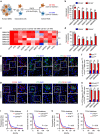
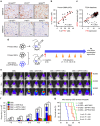
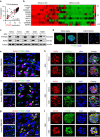
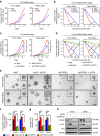
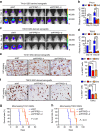
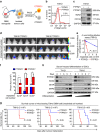
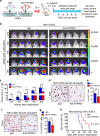

Similar articles
-
Chemotherapy-driven increases in the CDKN1A/PTN/PTPRZ1 axis promote chemoresistance by activating the NF-κB pathway in breast cancer cells.Cell Commun Signal. 2018 Nov 29;16(1):92. doi: 10.1186/s12964-018-0304-4. Cell Commun Signal. 2018. PMID: 30497491 Free PMC article.
-
PTN-PTPRZ1 signaling axis blocking mediates tumor microenvironment remodeling for enhanced glioblastoma treatment.J Control Release. 2023 Jan;353:63-76. doi: 10.1016/j.jconrel.2022.11.025. Epub 2022 Nov 24. J Control Release. 2023. PMID: 36402232
-
The PTPRZ1-MET/STAT3/ISG20 axis in glioma stem-like cells modulates tumor-associated macrophage polarization.Cell Signal. 2024 Aug;120:111191. doi: 10.1016/j.cellsig.2024.111191. Epub 2024 Apr 27. Cell Signal. 2024. PMID: 38685521
-
Anaplastic lymphoma kinase: "Ligand Independent Activation" mediated by the PTN/RPTPβ/ζ signaling pathway.Biochim Biophys Acta. 2013 Oct;1834(10):2219-23. doi: 10.1016/j.bbapap.2013.06.004. Epub 2013 Jun 15. Biochim Biophys Acta. 2013. PMID: 23777859 Review.
-
Protein Tyrosine Phosphatase Receptor Zeta 1 as a Potential Target in Cancer Therapy and Diagnosis.Int J Mol Sci. 2023 Apr 30;24(9):8093. doi: 10.3390/ijms24098093. Int J Mol Sci. 2023. PMID: 37175798 Free PMC article. Review.
Cited by
-
Regulatory networks driving expression of genes critical for glioblastoma are controlled by the transcription factor c-Jun and the pre-existing epigenetic modifications.Clin Epigenetics. 2023 Feb 27;15(1):29. doi: 10.1186/s13148-023-01446-4. Clin Epigenetics. 2023. PMID: 36850002 Free PMC article.
-
Protein Tyrosine Phosphatase Receptor Type Z in Central Nervous System Disease.Int J Mol Sci. 2022 Apr 16;23(8):4414. doi: 10.3390/ijms23084414. Int J Mol Sci. 2022. PMID: 35457233 Free PMC article. Review.
-
Tumor-associated macrophages increase the proportion of cancer stem cells in lymphoma by secreting pleiotrophin.Am J Transl Res. 2019 Oct 15;11(10):6393-6402. eCollection 2019. Am J Transl Res. 2019. PMID: 31737191 Free PMC article.
-
Single-cell analysis of human glioma and immune cells identifies S100A4 as an immunotherapy target.Nat Commun. 2022 Feb 9;13(1):767. doi: 10.1038/s41467-022-28372-y. Nat Commun. 2022. PMID: 35140215 Free PMC article.
-
Chronic myeloid leukemia stem cells require cell-autonomous pleiotrophin signaling.J Clin Invest. 2020 Jan 2;130(1):315-328. doi: 10.1172/JCI129061. J Clin Invest. 2020. PMID: 31613796 Free PMC article.
References
-
- Stupp R. et al.. Effects of radiotherapy with concomitant and adjuvant temozolomide versus radiotherapy alone on survival in glioblastoma in a randomised phase III study: 5-year analysis of the EORTC-NCIC trial. Lancet Oncol. 10, 459–466 (2009). - PubMed
-
- Garris C. & Pittet M. J. Therapeutically reeducating macrophages to treat GBM. Nat. Med. 19, 1207–1208 (2013). - PubMed
Publication types
MeSH terms
Substances
Grants and funding
LinkOut - more resources
Full Text Sources
Other Literature Sources
Research Materials

